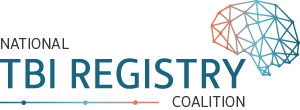Coalition aligns companies and organizations dedicated to working with the U.S. government to create a national registry for individuals living with a traumatic brain injury (TBI)
WASHINGTON, D.C., December 6, 2021 /PRNewswire/ — The National TBI Registry Coalition (NTRC) today announced its official launch as the coalition aligns several leading nonprofit and corporate organizations that have joined forces on this project. The goal of the coalition is to collectively advocate for the federal government to develop a national registry of individuals living with a traumatic brain injury. Once created, the registry could assist individuals and families with surveillance and prevention opportunities as well as provide easily accessible information about new therapies and services to address TBI. Additionally, NTRC member organizations are working together to promote public awareness about individuals and caregivers impacted by TBI.
Current NTRC member organizations include Abbott, the American College of Radiology (ACR), the American Congress of Rehabilitation Medicine (ACRM),the International Brain Injury Association (IBIA), the National Football League Players Association (NFLPA), the North American Brain Injury Society (NABIS), Philips, and SanBio.
A TBI is defined by the U.S. Centers for Disease Control and Prevention as any bump or blow to the head, or penetrating injury, that results in the disruption of normal brain function. TBI affects people of all ages and backgrounds as well as those living in urban, rural, and frontier areas in the U.S. Children, adolescents and young adults, and the elderly are particularly vulnerable to TBI, as are our nation’s military servicemembers and first responders. Once an individual sustains a TBI, a myriad of health conditions may develop and become persistent. These conditions may include problems with movement and sensation, difficulty with thinking and memory, emotional and behavioral disturbances, epilepsy, sleep deprivation, personality changes, alcohol and substance use disorders, among others1. In the United States, over 150 individuals die every day from injuries caused by a TBI, contributing to about 30 percent of all injury related deaths.2 In the United States, almost 3,000,000 TBI-related emergency department visits, hospitalizations, and deaths occurred in 2013, and in 2019 there were over 60,000 TBI-related deaths.3 The best available estimates suggest that at least 3.17 million people in the United States, or 1.1% of the population, are living with long-term disabilities from TBI.4
“Developing a national TBI registry is critical to improving the lives of the millions of people and families affected by traumatic brain injuries,” said Dr. David Arciniegas, Chairman and CEO of the International Brain Injury Association and Co-Chair of the NTRC Steering Committee. “Accurate and timely information about the numbers and needs of persons with TBI must be accessible by Americans and their families, healthcare providers, researchers, public policymakers, and advocates.”
Dhiraj Pisal, Innovation Leader at Philips and Co-Chair of the NTRC Steering Committee, added, “We have seen the impact of TBI on both the patient and the caregiver in our own research efforts, and we understand the intrinsic value of a national TBI registry. It is important to create a public-private partnership that can help advocate for this very worthy cause.”
“Research has demonstrated that individuals living with a TBI experience a range of physical, psychological and sensory symptoms that greatly impact their quality of life. These individuals need various types of support, and the development of a national TBI registry will help to improve the lives of people in the United States living with a TBI,” concluded, Keita Mori, Chairman of SanBio and Secretary of the NTRC Steering Committee.
To learn more about the NTRC, including membership opportunities, please visit www.nationaltbiregistry.org.
———–
Media inquiries:
Julie Pawelczyk,
Executive Director, NTRC
jpawelczyk@conafaygroup.com
———–
1. Living with Traumatic Brain Injury. Model Systems Knowledge Translation Center. https://msktc.org/tbi
2. Taylor CA, Bell JM, Breiding MJ, Xu L. Traumatic Brain Injury–Related Emergency Department Visits, Hospitalizations, and Deaths — United States, 2007 and 2013. MMWR Surveill Summ 2017;66(No. SS-9):1–16. DOI: http://dx.doi.org/10.15585/mmwr.ss6609a1
3. Centers for Disease Control and Prevention. National Center for Health Statistics: Mortality Data on CDC WONDER. Available at: https://wonder.cdc.gov/mcd.html.
4. Zaloshnja E, Miller T, Langlois JA, Selassie AW. Prevalence of long-term disability from traumatic brain injury in the civilian population of the United States, 2005. J Head Trauma Rehabil. 2008 Nov-Dec;23(6):394-400.


